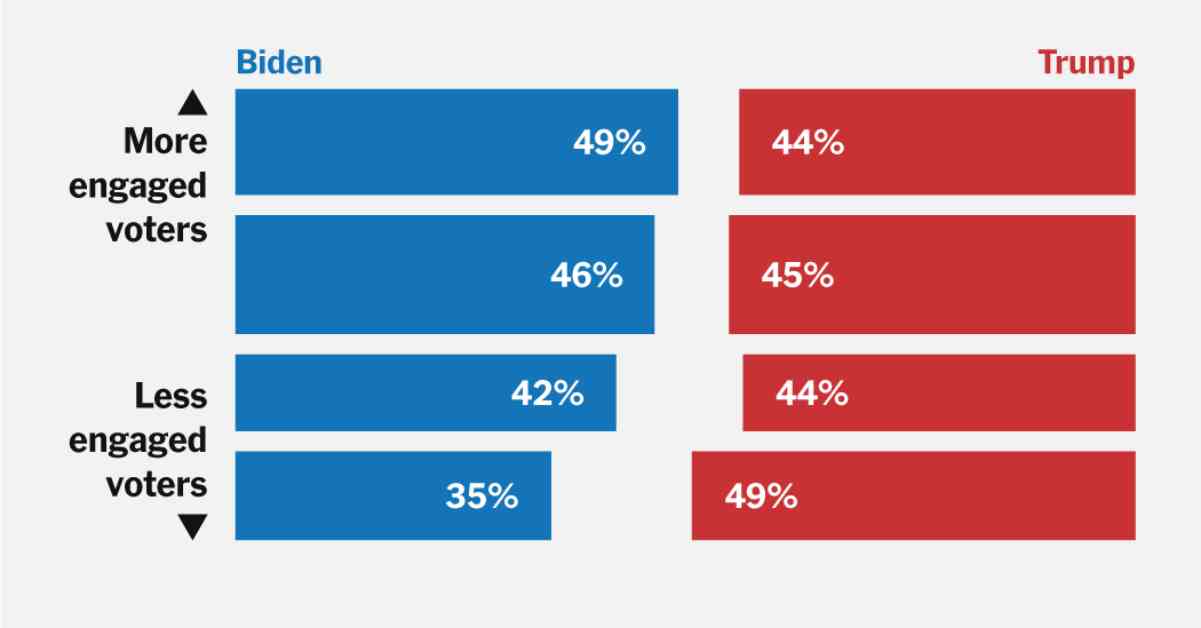In the upcoming 2024 election, the impact of high voter turnout on President Biden’s electoral chances is a crucial factor to consider. Recent data from New York Times/Siena College polls reveal an interesting shift in voter behavior that could potentially benefit former President Donald Trump.
Traditionally, President Biden has maintained a lead among regular primary and midterm voters. However, among the rest of the electorate, including those who did not participate in recent elections, Trump holds an advantage. This unexpected trend suggests that if all registered voters were to turn out, Trump would benefit more than Biden.
The rise of conservative populism under the Trump brand has reshaped American politics, leading to a scenario where less engaged and infrequent voters are showing dissatisfaction with President Biden. These voters, although not necessarily pro-Trump, are driven by economic concerns and a desire for significant political changes. As a result, many low-turnout voters, including some Democrats, are considering backing Trump in the upcoming election.
This unique turnout dynamic poses a challenge for both campaigns as they navigate strategies to mobilize irregular voters. With five months left until the election, there is still an opportunity for less engaged voters to shift their support back to Biden. However, the preferences of these infrequent voters appear to be highly volatile and subject to change based on various factors.
The New York Times/Philadelphia Inquirer/Siena College polls conducted in key battleground states such as Pennsylvania, Michigan, Georgia, Arizona, Wisconsin, and Nevada offer valuable insights into the evolving voter landscape. These polls highlight the importance of understanding voter behavior and adapting campaign strategies to appeal to a diverse electorate.
As the election approaches, the role of voter turnout in shaping the outcome becomes increasingly significant. Both President Biden and former President Trump will need to engage with voters across the spectrum to secure victory in 2024. The dynamics revealed in recent polls underscore the need for a comprehensive approach to mobilizing voters and addressing their concerns effectively.




